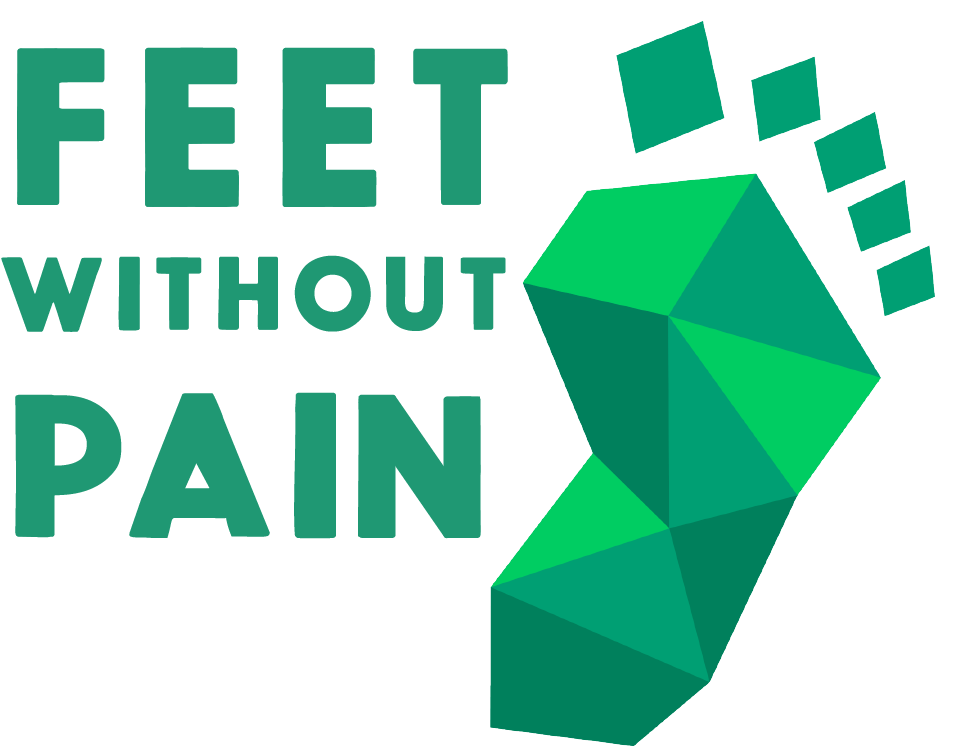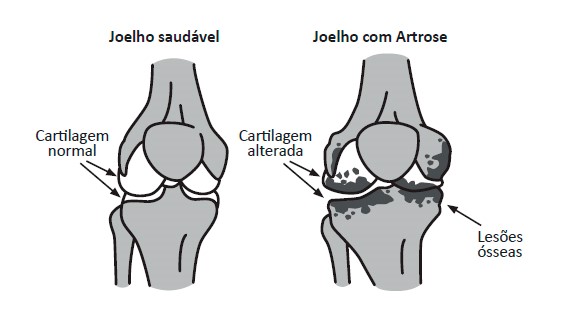Arthritis
Swollen ankles can be rheumatoid arthritis. It is usual that those with arthritis feel affected joint pain (foot, knee, ankle, etc.) and notice swelling and redness on site.
Causes
It is believed that natural joint wear, due to aging, is primarily responsible for developing the disease. That’s why it is more common in older people. However, other reasons may also influence the process, such as:
– Genetics: limb malformation or family history of the disease increase the chances of arthritis;
– Misalignment: joint overload caused by lower limb misalignment (valgus and varus knee and pronounced and supine steps) increases the likelihood of inflammation in the joints;
– Injuries: the recurrence of traumatic incidents in sport, at work, or during life can compromise the integrity of joint tissue;
– Obesity: Excess weight increases the amount of load in the joints, which can accelerate its wear;
– Infections: The presence of bacteria, viruses, or fungi inside the body can cause inflammation of the joints;
– Autoimmune disorders: These happen when the body begins to attack the very tissues of the human body. Muscle, circulatory, and bone diseases can also cause arthritis. In this case, the development of rheumatoid arthritis is widespread;
– Metabolic Diseases: Diseases that cause crystal formations within the joints (gout, for example) may ignite the joint and, consequently, cause arthritis symptoms.
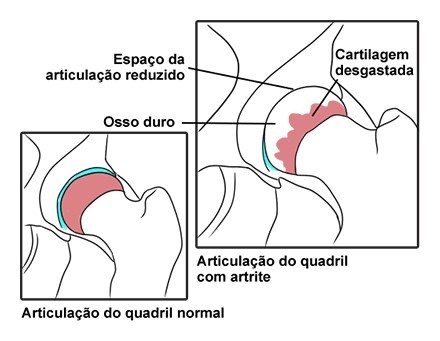
SIGNS AND SYMPTOMS
Symptoms of arthritis evolve slowly and are related to inflammation of the joints. Therefore, they can appear in any “joint” of the body and limit the movements. The arthritis symptoms appear mainly in the hands, fists, knees, and feet. It is common for them to include the following:
– Articular stiffness;
– Pain in the joints;
– Redness on the skin and around the joint;
– Increased temperature in the affected joint.
In addition to those already mentioned, it is crucial to be aware of the following:
– Inexplicable and intense localized pain;
– Increased joint size;
– Localized fever, associated with redness;
– Sensation of weight when moving a joint;
– Significant reduction of sudden and involuntary weight;
– Persistent joint pain (for more than three days).
Types of arthritis
Arthrosis or osteoarthritis
This disease wears the cartilage surrounding bones and has a degenerative and progressive character (destroying structures over time). Many factors can help develop arthrosis; the most important are trauma, overload, and misalignment of the feet, ankles, and knees. More than 10 million Brazilians are estimated to live with the disease, but less than half know the diagnosis. As the pathology evolves, it is becoming increasingly difficult to move the affected joint, and the hardest ones are those that receive the body’s weight, such as the hip, knee, and foot.
Arthrosis is rare before age 40 and very common after 60 years. Arthrosis was believed to be part of the natural process of human aging, but today we know that it is a consequence of the aggressions that the joints suffer throughout life. The latest studies have proven that modifying the disease’s evolutionary course and reducing pain symptoms and the joint’s degenerative process is possible.
Rheumatoid arthritis (ankylosing arthritis)
It is a chronic disease of an autoimmune inflammatory character (the immune system cells attack the body’s tissues). This pathology is associated with genetic factors, affects 1% of the world’s population, and is more common in women than men.
Rheumatoid arthritis can reach any articulation and is expected in the feet, hands, and fists. It also reaches some organs, such as the lungs and the skin. Because of the damage it causes to cartilage, the affected region can be deformed or enter into bone erosion. According to the American College of Rheumatology, the specialist can diagnose it when the person has 4 of the 7 characteristics pointed out below for more than 6 weeks:
– Inflammation of at least three joints;
– Arthritis in the hands or fists;
– Symmetrical arthritis (joint inflammation on both sides of the body and at the same time);
– “Lumps” that form near the joints, something that is very common in hands and fingers (rheumatoid nodules);
– Presence of blood-specific antibodies, known as the rheumatoid factor;
– Articular alterations found by image examination, with the presence of erosions or decalcifications in the hands and fists.
Gout
Gout, also known as gouty arthritis, is a variety of arthritis characterized by joint inflammation due to the high rate of uric acid in the blood. The body naturally produces this substance from purine metabolism (proteins found in various foods). When uric acid accumulates in the blood, crystals are formed, causing joint inflammation. People with problems in the liver or kidney have an excess of uric acid in the blood, as these organs are responsible for the body’s metabolic balance. Excess uric acid in the body can accumulate in the joints, forming crystals that usually choose a single joint.
Gout affects overweight middle-aged men; it can become inflammatory polyarthritis if not diagnosed and treated. The main factors leading to gout development are dehydration, obesity, anemia, diabetes, high blood pressure, thyroid changes, alcoholism, genetic factors, and radical diets. People with gout usually have intense and pulsed pain in the toes. The discomfort is accompanied by local fever and redness during crisis cycles. In this period, the joint is more sensitive to contact (about 3 to 10 days).
The beginning of treatment is to change the diet, reducing the consumption of alcohol and red meat. It is also imperative to practice light exercises and use custom insoles. When the disease reaches the chronic stage, in addition to these primary care, rest, use anti-inflammatory drugs, and make cold compresses.
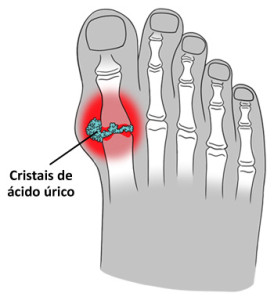
Psoriasis
Psoriasis is an autoimmune disease characterized by reddish and squamous lesions that mainly affect the scalp and the skin of the knees and elbows. However, these lesions may appear anywhere on the body. In most cases, psoriasis precedes joint inflammation (pathology known as psoriatic arthritis).
Psoriasis affects men and women in the same way. Studies show that 50% of people with psoriasis parents will also develop the disease, but that does not mean they will all develop psoriatic arthritis. Usually, less than 20% of people are affected by this condition.
Systemic lupus erythematosus (SLE or just lupus)
This is a chronic and autoimmune inflammatory disease whose symptoms may arise in various organs slowly and progressively (within months) or faster (in weeks) and vary according to disease activity. In this disease, joint pain, rigidity, transient synovitis, and non-erosive arthritis (Jaccoud arthropathy) or erosive (Rhupus) may be found.
Approximately 95% of people with lupus feel joint pain, but the discomfort on site does not always have inflammatory signs. Arthritis, in the case of lupus, usually affects more than four joints and appears symmetrically (happens in both knees, elbows, and ankles).
This pathology is migratory, as inflammation may disappear from one place and appear in another. It does not cause severe deformity or morning stiffness as in other types of arthritis, but the pain is intense.
Rheumatic fever
It responds to a throat infection caused by bacteria (streptococcal). This condition causes fever, sore throat, neck lumps (increased ganglia), intense redness, red dots, or throat puds. Rheumatic fever is an inflammatory disease that can compromise the heart, brain, joints, and skin, especially in children from 5 to 15 years old.
The arthritis of rheumatic fever is migratory and affects large joints such as knees, elbows, ankles, and fists. The pain usually begins in the legs and is associated with other inflammatory signs, such as temperature increase, redness, and redness and swelling. The treatment is anti-inflammatory drugs and rest.
Ankylosing spondylitis
It is a chronic inflammatory disease that has no cure. It mainly reaches the spine joints but can also reach the hip, knees, and shoulders. Its main feature is the fusion of the spine’s vertebrae, which makes joint flexibility difficult and curves the posture forward. In severe cases, the ribs are affected, making breathing difficult.
This disease is more common in men, and symptoms begin in adulthood. Unfortunately, there is no cure, but early treatment avoids progression and ensures the joints continue moving. Treatment aims to relieve symptoms so that the person keeps living well. Yoga, Pilates, Physiotherapy, Water Herities, and Postural Reeducation (GPR) are advised for those with ankylosing spondylitis, but they should be adapted to strengthen the spine and facilitate mobility.
Bacterial arthritis
Also called septic arthritis, this infection can reach joints after surgery or spread through the bloodstream when the immune system is weakened. Bacterial arthritis is common in joints such as the knee and hip, and the elderly who put prostheses in these regions are the most affected.
Symptoms are intense pain when moving the affected region, difficulty moving joints, swelling and redness, fever above 38ºC, burning sensation, and irritability. Physiotherapy in cases of septic arthritis is vital because moving the joint helps inhibit pain and recover movements.
Scleroderm
A rare and autoimmune disease that can initially manifest itself in the joints of the hands and is very confused with rheumatoid arthritis. There are two forms of the disease: localized and systemic.
– Localized scleroderma usually hits the hands and face. It has slow evolution without significant complications, and its symptoms may disappear spontaneously. This variation of the disease affects more children and female people, but when it hits men, the effects are much more severe;
– Systemic scleroderma affects internal organs and certain areas of the skin. Its evolution is slow and progressive, reaching more women from 30 to 50 years. Symptoms include hardening the skin of the hands, feet, and face. In addition, the disease can evolve and interrupt the movement of the joint and other affected places due to the accumulation of calcium crystals under the skin near the joints.
DOES ARTHRITIS HAVE A CURE?
It is essential to highlight that there is still no definitive cure for arthritis, and there is no way to reverse any deformities it may have caused (such as bumps and other bone damage). Still, treatments are very effective in retarding the disease and eliminating the symptoms.
DIAGNOSIS
For a good diagnosis of the disease, you should seek a rheumatologist. It will evaluate the history of pain and injury and perform physical, laboratory, and imaging examinations. Examinations may be required at the pain site to analyze joint movement and to identify if the structure is rigid. The most recommended exams are the following:
– Blood tests to identify if the person has anemia or lives with any other change;
-X-ray to verify the positioning and general aspect of the joints;
– Tomography, magnetic resonance imaging, and ultrasound to identify the place of inflammation and the state of cartilage and joints.
In some cases, doctors opt for arthroscopy: surgery made to examine the interior of the joints and simultaneously remove some local tissue. Very common in cases of arthritis located on the knees and shoulder. Like symptoms, treatments will depend on the type of disease that is related to arthritis. Therefore, the guidance of a specialized professional such as a physiotherapist or rheumatologist is extremely important since he will diagnose and indicate the best treatment.
PREVENTION AND TREATMENT
The main objective of treatment is to reduce pain, improve joint function and prevent the case from worsening. There is an ideal treatment for each type of arthritis, but some tips help improve joint inflammation, such as:
– Lose weight (if overweight) decreases overload on the joints and prevents the disease from getting worse;
– Do not stay long in the same position as this can cause pain and stiffen the joint;
-Stay hydrated. It improves circulation in the body and decreases the chances of metabolic arthritis (gout);
– Do physical therapy. Professional-oriented exercises help control bone deformity and muscle stiffness;
– Practice physical activities with little impact. Doing exercises such as pilates, swimming, and water aerobics helps maintain resistant muscles;
– In times of crisis and a lot of pain, be at rest to protect the joint;
– Making cold compresses helps contain the inflammation and soften pain;
– Use medicines prescribed only by the doctor;
– Improve your diet. Consumption of healthy foods is essential to treat any arthritis, especially gout;
– Local massage can also be an alternative, as it stimulates circulation and helps reduce joint stiffness. Choose moisturizing creams that stimulate circulation, such as camphor, menthol, and arnica;
– Use Feet Without Pain custom insoles and shoes.
FEET WITHOUT PAIN® INSOLES AND SHOES FOR ARTHRITIS
Feet Without Pain uses devices that detect the foot deviations and the size of the feet, which allows the manufacturing of insoles and shoes for each person’s foot. In addition, it guarantees the gait misalignment correction, improves the distribution of plantar pressures, eliminates overload, and prevents disease development.
Custom-made shoes are manufactured considering the width and circumference of the metatarsals. Consequently, there is a perfect fit, with no excessive compression for those with wide feet nor being too loose, causing decreased stability and a lot of friction between the foot and the shoe. In addition, custom-made shoes can have one of our 3D-printed soles, guaranteeing excellent impact cushioning and good support.
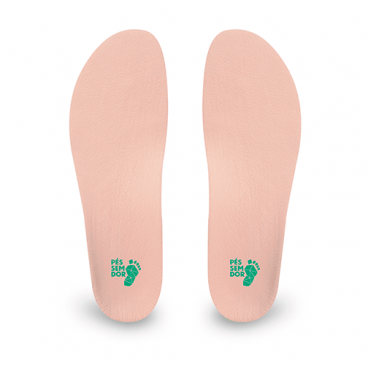
The custom insoles and shoes are made with 3D technology and millimetric digital precision after a free foot, ankle, and knee evaluation with our specialists at one of our branch offices. Check some of their benefits for your feet below:
- Elimination or reduction of pain;
- Injury prevention;
- Increased comfort;
- Perfect fit;
- Standing longer without pain or discomfort;
- Prevention of pathologies progression;
- Improved impact absorption;
- Improved sports performance.
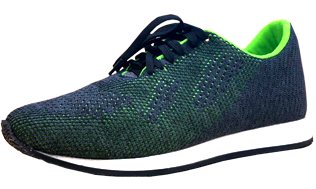
Custom Unisex Shoes Feet Without Pain | You can choose from over 20 men’s and women’s shoe models.
SURGERY
Surgical procedures may be required to rebuild or replace the joint in cases of joint degeneration. However, this method is only recommended when conservative treatment is not effective. One of the most performed procedures, especially among the elderly, is arthroplasty. This surgical method involves replacing the joint with a prosthesis. The hip and knee are the body parts most subjected to this surgery.
FREQUENTLY ASKED QUESTIONS (FAQs)

How to purchase your custom shoe or insole?
It’s fast and easy! Schedule a free evaluation of your feet with our specialists to buy your custom-made shoe.
Call, send a message to WhatsApp at 4003-8883, or visit: www.pessemdor.com.br/agendamento.
How does the evaluation work?
Upon arriving at a Feet Without Pain branch office, you will be received by a foot, ankle, and knee specialist, who will then fill out a registration form and ask some questions about your pain. Next, the assessment of the feet begins.
The specialist will examine your feet to understand your foot pains and complaints. Then, using the high-precision 3D scanner device, the specialist captures your feet’ measurements.
We are the only company with a 3D scanner for designing custom shoes. First, with the measurements of your feet, a mold is created using 3D printers, and after that, we start making your shoe.
How long does it take for the shoes and insoles to be ready?
Feet Without Pain produces custom-made shoes in up to 3 days; then, they are sent to your home free of charge!
Is the evaluation free?
Our assessment is completely free! We perform a complete analysis of your feet and legs, and you pay nothing for it!
Do we accept medical insurance?
We do not work with insurance because our assessment is completely free! But you can check if your plan somehow refunds you regarding the shoes!
EXTERNAL LINKS
1) A fisioterapia na osteoartrose: uma revisão da literatura | Amélia Pasqual Marques e Akemi Kondo
3) The American Rheumatism Association 1987 revised criteria for the classification of rheumatoid arthritis | Online Library Wiley
